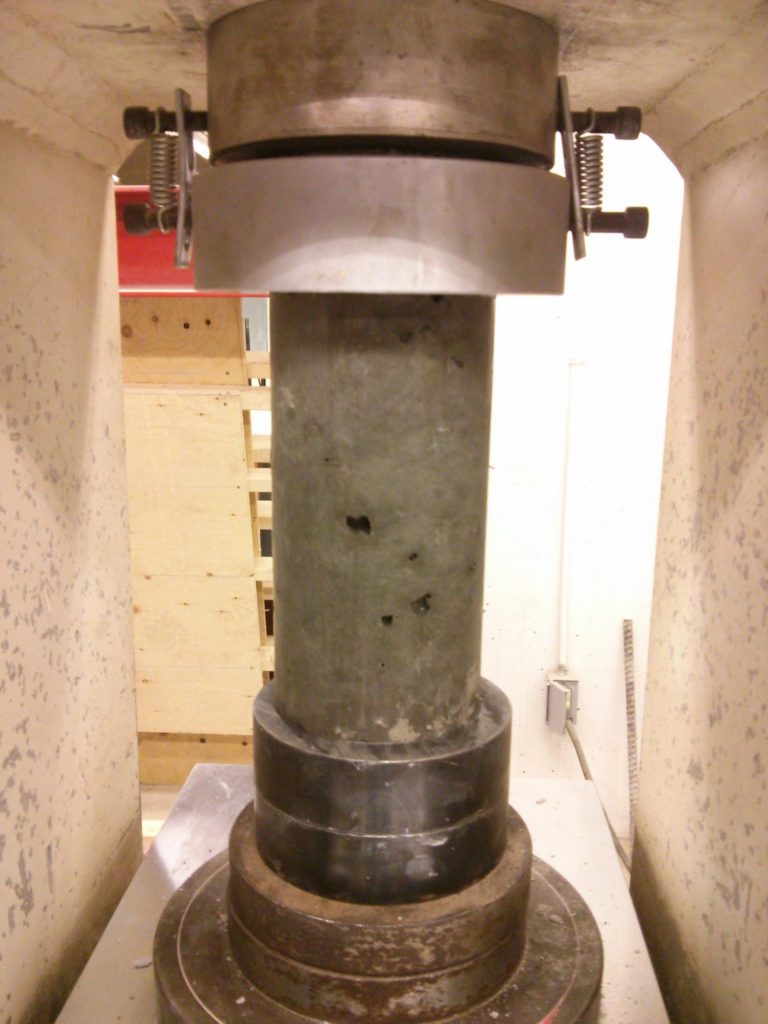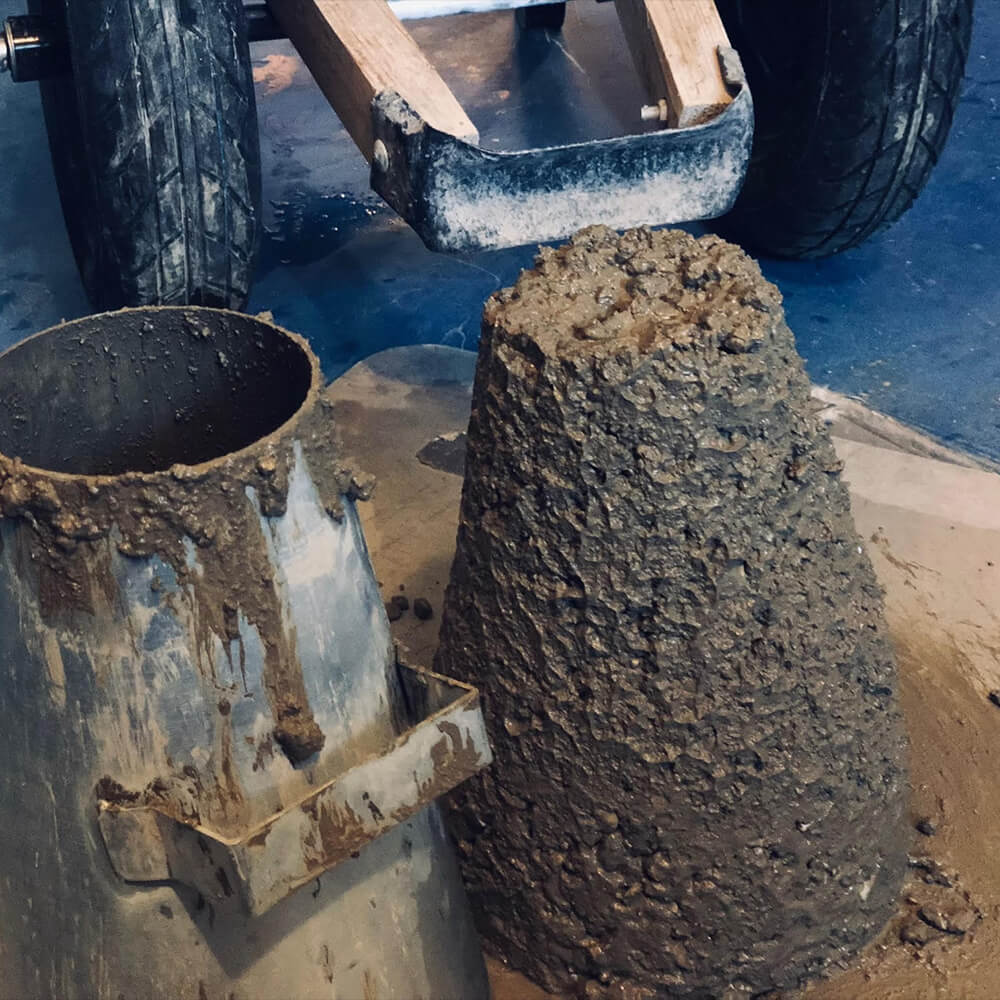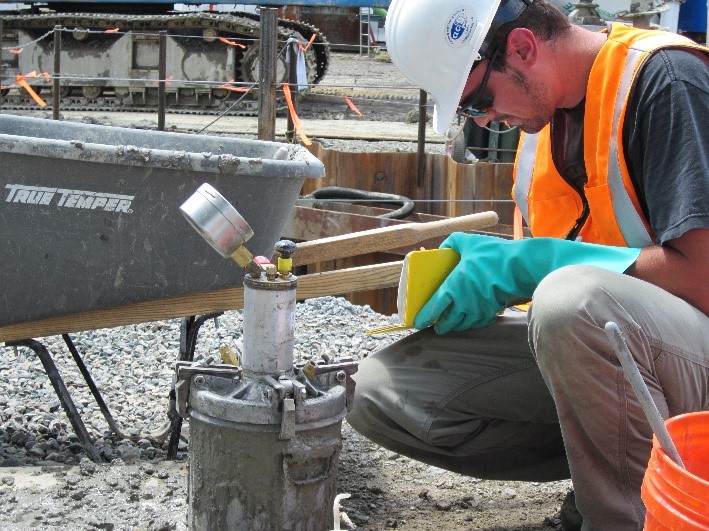Putting Concrete to the Test: Revealing the Keys of Product Stamina
In spite of its prevalent use, the tricks of concrete's amazing strength remain largely hidden. In this discussion, we will dive into the composition of concrete, the factors that affect its toughness, and the innovative techniques utilized to measure and improve its efficiency.
The Composition of Concrete
Concrete is a composite product containing a blend of cement, water, accumulations, and usually various other ingredients. This combination supplies concrete with its unique homes, consisting of flexibility, toughness, and stamina. Cement, which acts as the binder, is normally made from limestone, clay, or shale that has actually been finely ground and after that warmed to heats in a kiln. The resulting powder, called Rose city cement, reacts with water to form a paste that hardens and binds the accumulations with each other.
Aggregates, such as sand, gravel, or smashed stone, make up the mass of the concrete blend. They supply stamina to the product and load the areas between the cement fragments. The dimension and shape of the aggregates can influence the workability and strength of the concrete. Additionally, other additives might be included in the combination to enhance details homes or address particular demands. These ingredients can improve the workability, reduce the water content, raise the strength, or boost the durability of the concrete.
Comprehending the structure of concrete is crucial for designers and construction experts to develop and construct structures that meet certain performance demands. By very carefully selecting the kind and percentage of each component, the preferred stamina and durability of the concrete can be attained. Furthermore, improvements in material scientific research continue to explore new ingredients and mixes that can even more enhance the homes of concrete, making it a much more functional and reputable building material.
Factors Affecting Concrete Strength

Different types of concrete have varying chemical make-ups, which can affect the stamina of the resulting concrete. Furthermore, the dimension and shape of aggregates made use of in the mix can impact concrete strength.

Various other aspects that affect concrete stamina consist of the usage of admixtures, such as plasticizers or accelerators, the addition of supplemental cementitious products, and the existence of contaminations or contaminants in the raw materials.
Examining Methods for Concrete Strength
One frequently made use of method for examining the toughness of concrete is through the application of various screening strategies. These testing methods are essential in establishing the top quality and longevity of concrete structures. One of one of the most extensively utilized techniques is the compressive stamina examination, which gauges the maximum load a concrete sample can stand up to before it falls short. This test involves using a progressively boosting tons to a round or cubical specimen till it fractures.
An additional crucial testing approach is the flexural stamina test, which assesses the ability of concrete to withstand flexing forces. This examination involves subjecting a beam-shaped concrete specimen to a progressively raising tons until it reaches its optimum flexing capability. By gauging the tons and deflection at failing, engineers can determine the flexural stamina of the concrete.
Along with these tests, there are various other methods readily available for analyzing concrete toughness, such as the split tensile strength test, the pull-off examination, and the ultrasonic pulse velocity test. The split tensile strength examination measures the capability of concrete to resist tensile forces, while the pull-off examination reviews the bond toughness between the concrete and various other products. The ultrasonic pulse rate examination makes use of acoustic waves to identify the top quality and harmony of concrete.
Enhancing Concrete Toughness
To better maximize the durability and durability of concrete structures, numerous methods can be used. One approach is to make use of top notch materials during the concrete manufacturing procedure. This consists of very carefully choosing accumulations, cement, and additives that improve the durability of the end product. concrete testing near me. As an example, making use of well-graded accumulations with correct bit dimension distribution can boost the general toughness and resistance to fracturing. In addition, including supplementary cementitious materials such as fly ash or slag can improve the concrete's resistance to chemical assault and minimize leaks in the structure.

In addition, reliable healing techniques play a critical function in enhancing concrete toughness. Treating includes keeping sufficient moisture and temperature level conditions for the concrete to correctly moisturize and get toughness. This process helps prevent cracking, surface area defects, and enhances general sturdiness.
Future Technologies in Concrete Innovation
In the world of concrete modern technology, advancements on the horizon assurance to change the industry and redefine the possibilities of construction. Researchers and designers are frequently aiming to develop cutting-edge techniques and materials that can boost the efficiency and look at more info sustainability of concrete.
One of the future developments in concrete innovation is the use of self-healing concrete. Bacteria embedded in the concrete are turned on upon crack formation, generating limestone to fill up the voids and bring back the architectural honesty of the material.
One more area of growth is the use of nanotechnology in concrete manufacturing. Nanomaterials, such as carbon nanotubes and graphene, can be added to concrete to boost its mechanical properties. These products have high stamina and conductivity, boosting the resilience and performance of the concrete - concrete testing near me. Additionally, nanotechnology can be used to develop self-cleaning concrete, which lowers the need for normal upkeep and cleansing.
Moreover, scientists are discovering the article source usage of 3D printing modern technology in concrete construction. This method enables the effective and accurate manufacture of complex frameworks, lowering material wastage and construction time. It additionally opens up new possibilities for architectural layout and personalization.
These future technologies in concrete technology have the prospective to revolutionize the building and construction market, making it much more lasting, effective, and cost-effective. With continuous r & d, we can expect to see these innovations end up being a truth in the near future.
Conclusion
Finally, recognizing the make-up of concrete and the aspects that affect its stamina is important for enhancing its durability. Different screening techniques can be utilized to properly measure concrete toughness, providing important understandings for building and construction tasks. As modern technology proceeds to development, future developments in concrete innovation hold the prospective to additionally improve the toughness and sturdiness of this necessary construction material.
In enhancement to these examinations, there are various other methods offered for assessing concrete stamina, such as the split tensile stamina test, the pull-off examination, and the ultrasonic pulse rate examination. The split tensile stamina test determines the capability of concrete to withstand tensile pressures, while the pull-off examination assesses the bond toughness in between the concrete and other products.One of the future developments in concrete technology is the usage of self-healing concrete. These products have high stamina and conductivity, boosting the resilience and efficiency of the concrete. As innovation proceeds to breakthrough, future innovations in concrete innovation hold the prospective to that site further improve the stamina and toughness of this important building and construction product.